Trying Out Lanxiniu, the "Uber of Moving Vans"
With less than two weeks to go before leaving Beijing, I'm currently in the process of posting some of my personal belongings in the mail. After filling two large boxes with my stuff, I was a bit worried that the average Uber car wouldn't have enough trunk space. Then I heard about Lanxiniu, an app that was described by a member of one of my WeChat groups as "the Uber of moving vans."
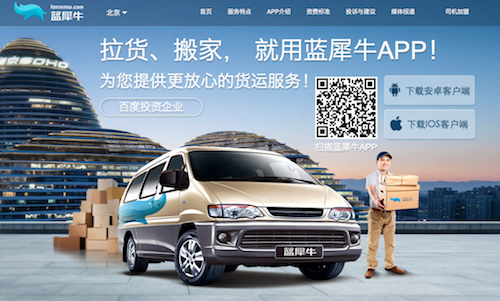
Despite its Chinese-only interface, Lanxiniu (蓝犀牛 "blue rhinoceros") is fairly intuitive to use. Here's a quick walkthrough of the process:
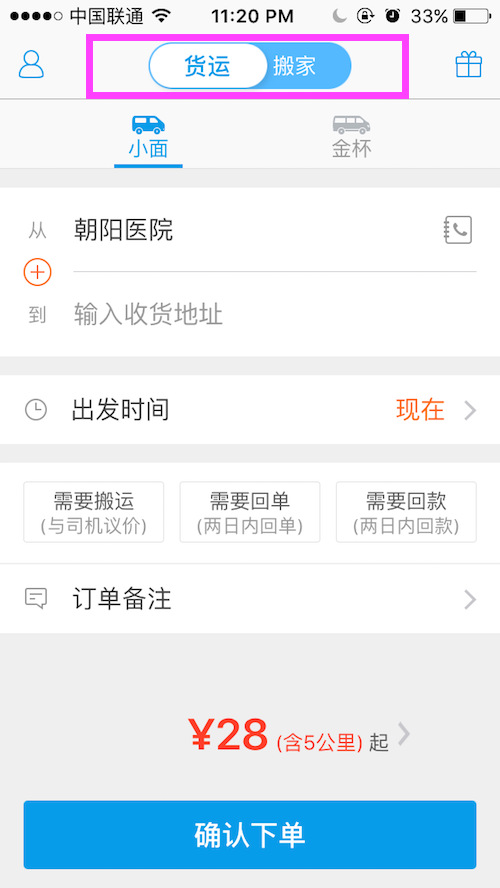
Step 1: At the top of the main screen, choose the purpose of your trip: transporting goods (拉货 lā huò) or moving house (搬家 bānjiā).
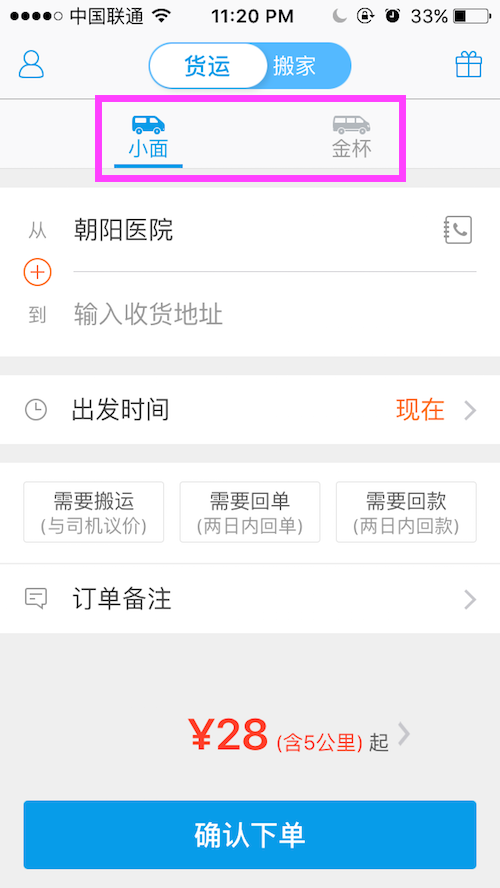
Step 2: Choose your vehicle. There are two types of van available: the smaller xiǎo miàn (小面) or the larger Jīnbēi (金杯).
A xiǎo miàn can fit approximately 1.7m by 1m by 1.4m worth of stuff while a Jīnbēi can fit approximately 2.7m by 1.2m by 1m.
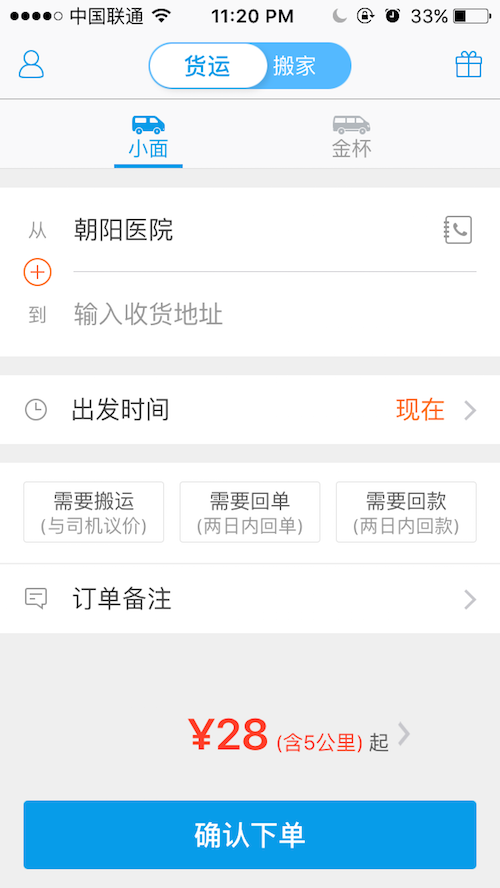
Step 3: Input your address by tapping 从 (cóng, "from"). The app will attempt to pinpoint your location, but in my case it was inaccurate.
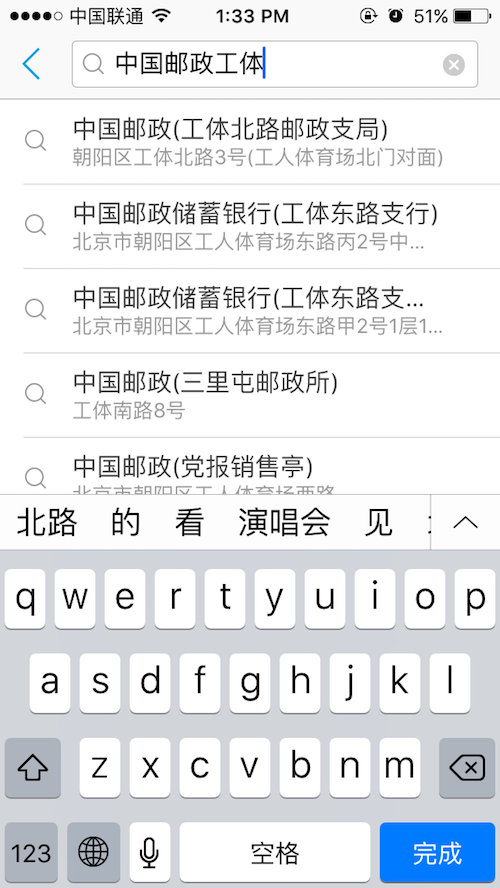
Step 4: Input your destination by tapping 到 (dào, "to").
For both the origin and the destination, the app will attempt to auto-complete the address when you start typing in Chinese characters or pinyin.
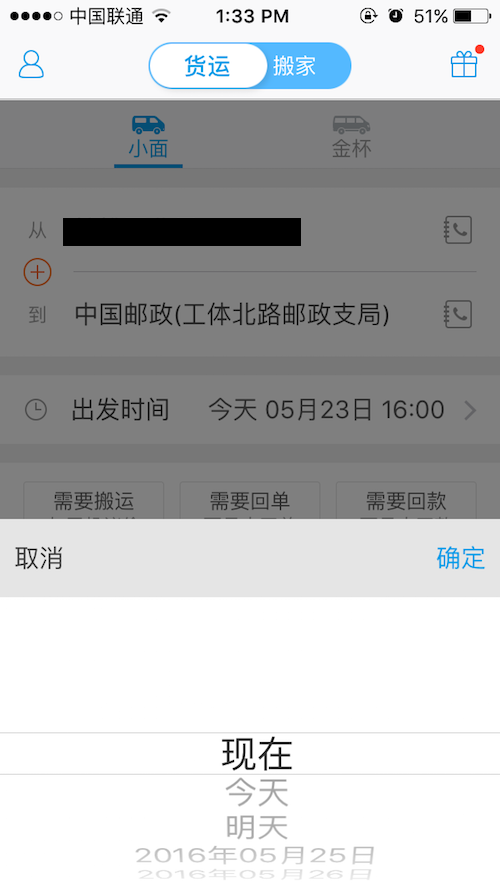
Step 5: Choose a time and date. The earliest available is "now" (现在 xiànzài), followed by "today" (今天 jīntiān), "tomorrow" (明天 míngtiān), and subsequent dates.
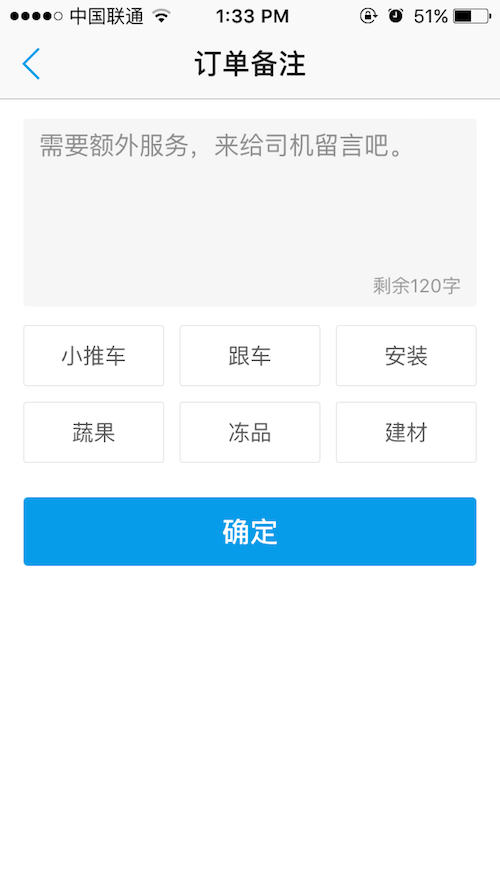
Step 6: Add special requests. You can type in the field or tap on one or more preset buttons, e.g. "trolley" (小推车 xiǎo tuī chē), "follow my car" (跟车 gēn chē), etc.
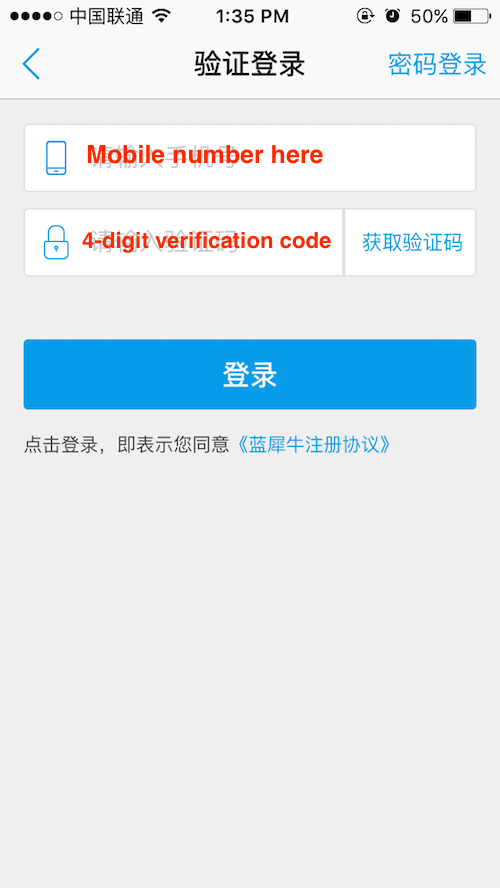
Step 7: Once you've clicked 确认下单 (quèrèn xià dān, "confirm order"), you'll be prompted for your contact details. Enter your mobile number, followed by the four-digit verification code that will be texted to you.
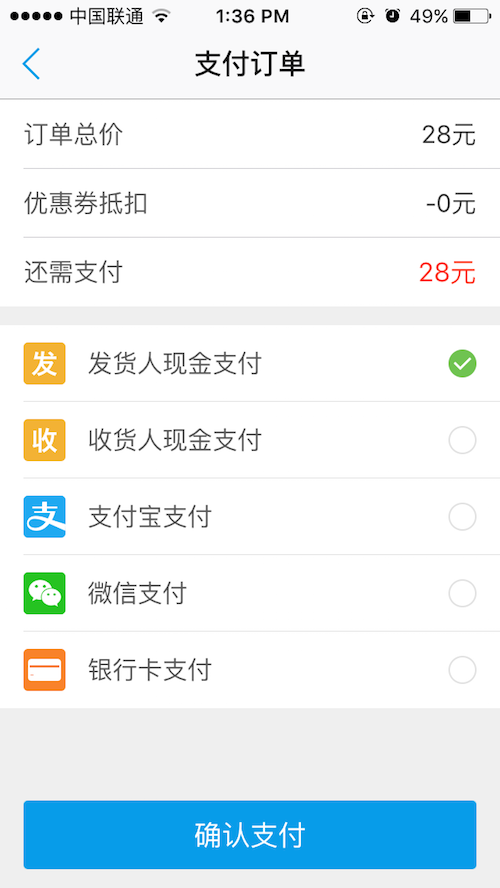
Step 8: Pay. Accepted payment methods include cash (by the sender or receiver), WeChat Wallet, Alipay, and online banking with a domestic bank.
For a small van, the base fare is RMB 28 for the first 5km and RMB 3.5 for every subsequent kilometer. The van will wait for up to one hour for free; beyond that, it costs RMB 10 for each extra slice of 15 minutes that the driver has to wait. Night moves carry an additional RMB 25 fee regardless of distance or waiting time.
For a Jinbei, the base fare is RMB 48 for the first 5km and RMB 4.5 for every subsequent kilometer. The waiting policy is the same, but the night surcharge is RMB 35 rather than RMB 25.
That's kind of it, really. Once payment is completed, the app will search for a driver – much like with Uber.
Here's the rub: Lanxiniu didn't work for me. An hour and a half and three calls to customer service later, I still didn't have a driver. One of the customer service reps explained that most likely no one wanted to pick up my order because the destination was only 2km away. Classic.
That said, a friend said she didn't have any issues using Lanxiniu to transport materials to a company event, and I originally found out about the app through a positive word-of-mouth recommendation on WeChat. It's possible that those moving house or going greater distances will have better luck than I did.
As for me, I ended up having to call an Uber; as soon as I got in, the driver started berating me for making him lose money on such a short trip. Ah, the joys of living in Beijing.
This article originally appeared on our sister site beijingkids.
Images: Lanxiniu






